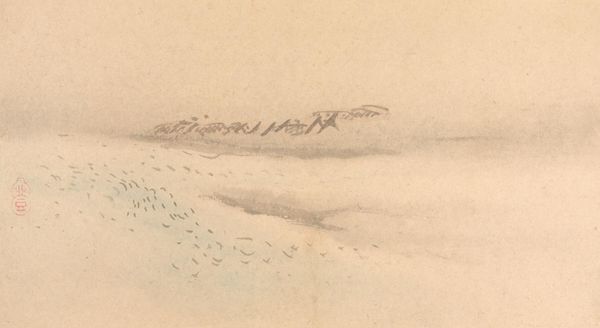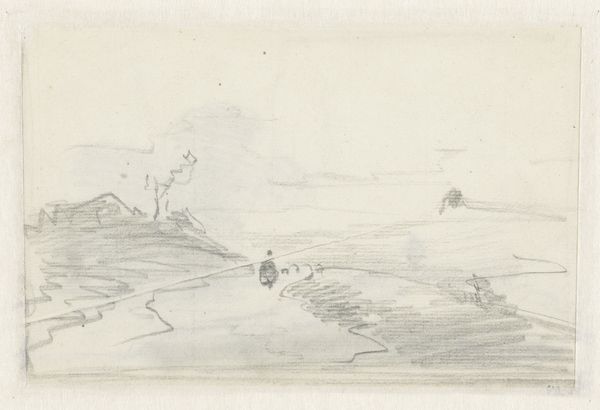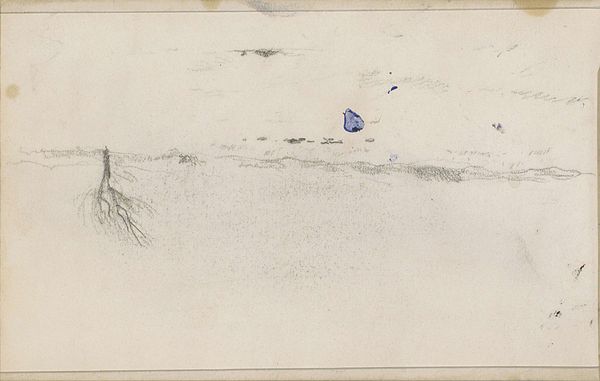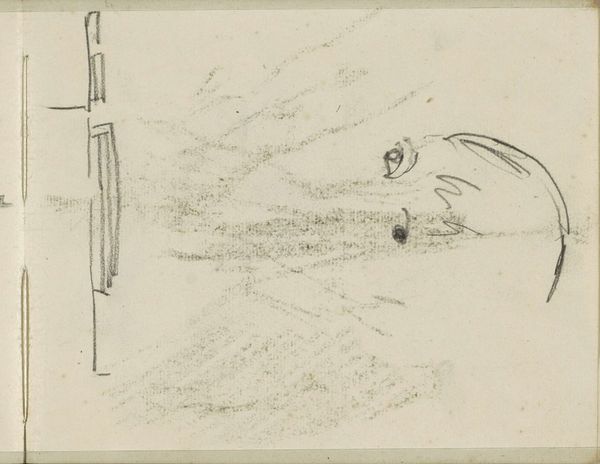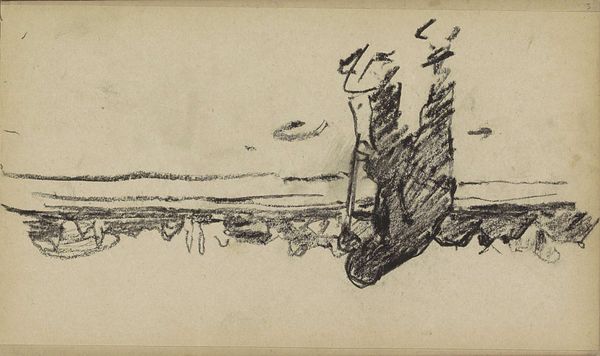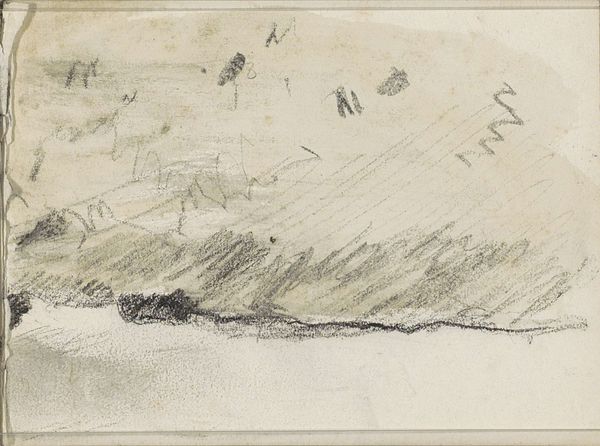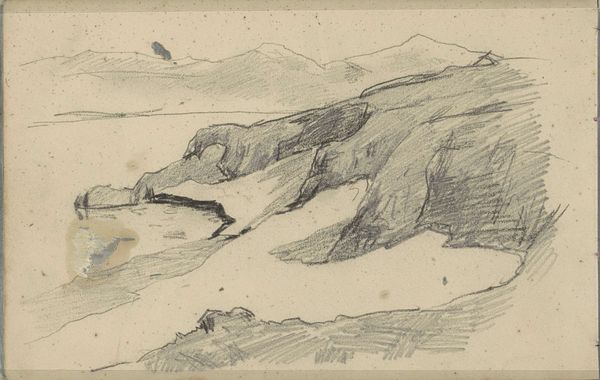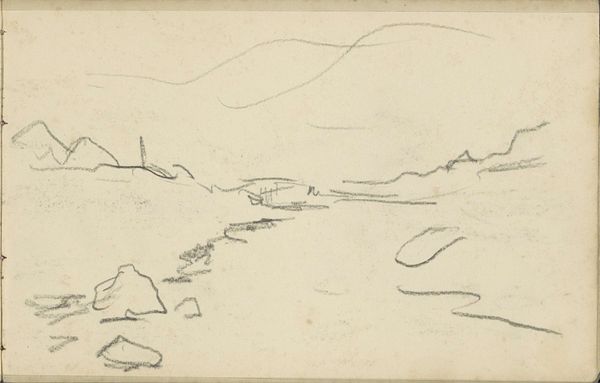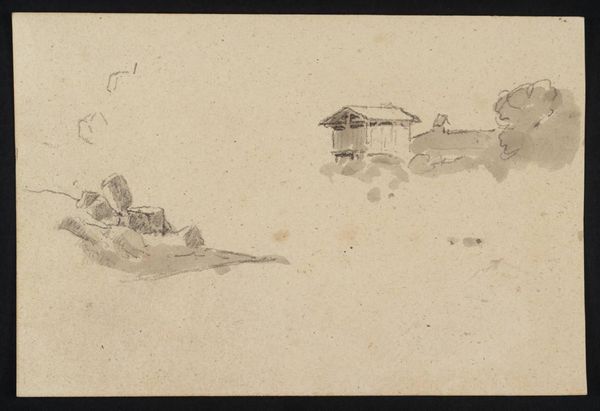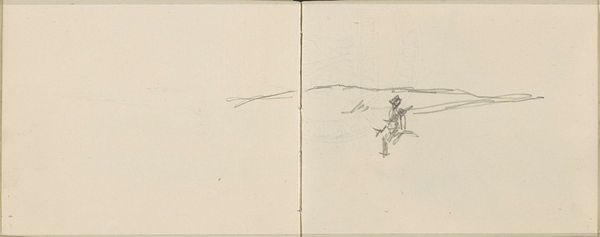
drawing, pencil
#
drawing
#
landscape
#
pencil
#
realism
Copyright: Rijks Museum: Open Domain
Curator: This is a drawing titled "Zeilschepen en een landschap met bebouwing," or "Sailing Ships and a Landscape with Buildings," created around 1880 by Louis Apol. It's rendered in pencil and exemplifies the artist’s interest in capturing scenes of Dutch life with a realist sensibility. Editor: It has a wonderful sense of immediacy, almost like a captured moment from a travel journal. The lines are minimal but manage to convey such a vast expanse, don't they? The starkness against the aged paper creates a nostalgic feel, like uncovering a forgotten memory. Curator: Indeed. Apol was known for his landscapes, often focusing on winter scenes. He documents the lived environment through naturalistic style but avoids explicit political themes, characteristic of his involvement with the Pulchri Studio, a group committed to artistic freedom. Editor: But there's a subtle undercurrent, perhaps a commentary on industrialization or the changing Dutch landscape. Sailing ships evoke tradition, and their presence juxtaposed against 'buildings' hints at urbanization. Does this suggest the displacement of rural communities? The tension in this scene seems incredibly potent. Curator: That’s a fascinating interpretation, although perhaps one Apol didn't overtly intend. Apol was invested in atmospheric quality, and the ships function as aesthetic objects in the vastness of space. The buildings are secondary, only providing spatial depth to the piece. Editor: Perhaps. I tend to approach the definition of ‘intended’ very flexibly, however, particularly when looking at art historically. Even seemingly apolitical art operates within—and reflects—social structures and norms of the time. The buildings representing industry and urbanization subtly impose themes that impact cultural identity. Curator: True, one can consider the drawing within the larger social context. Certainly, it contributes to a national artistic discourse through an aesthetic depiction of labor and the land. Editor: Precisely! For me, that intersection—between Apol's personal observations, Dutch artistic styles, and the underlying forces changing society—makes this more than just a landscape sketch. It's a record of how the Dutch navigated the tensions between their traditions and inevitable change. Curator: Looking at it in that context adds another dimension. It allows a richer reading, and invites further consideration of how national identity evolves visually through art. Editor: Absolutely. It’s those conversations that keep these works alive.
Comments
No comments
Be the first to comment and join the conversation on the ultimate creative platform.
